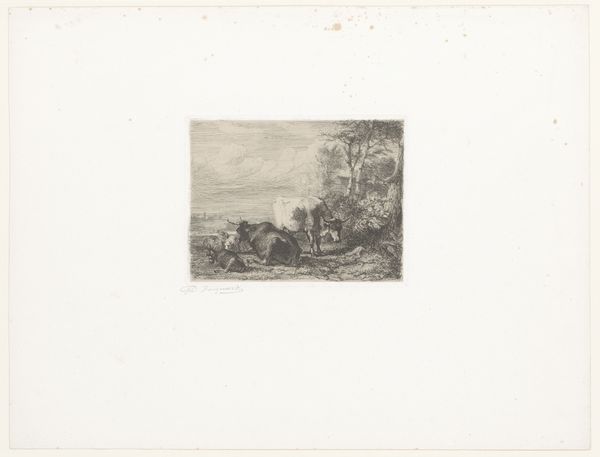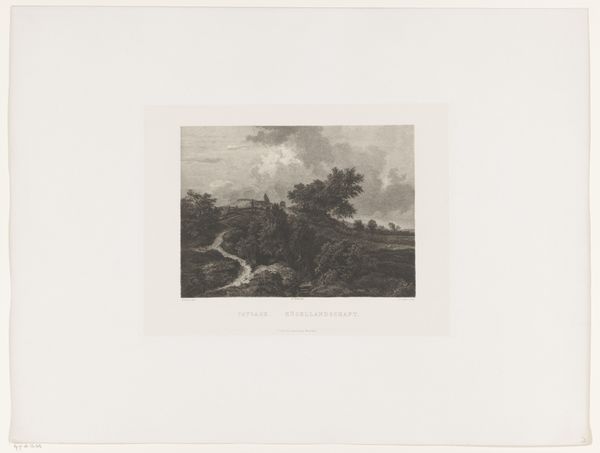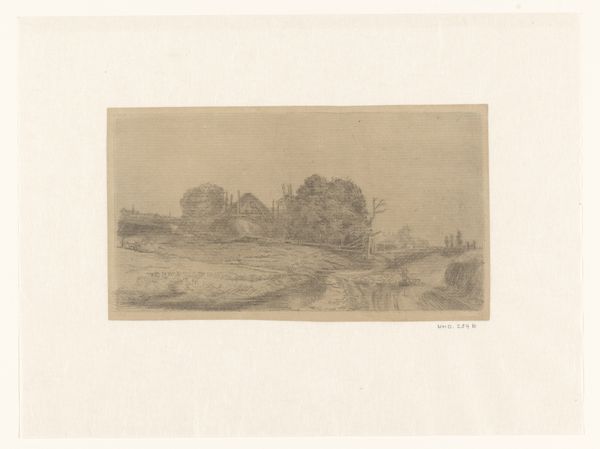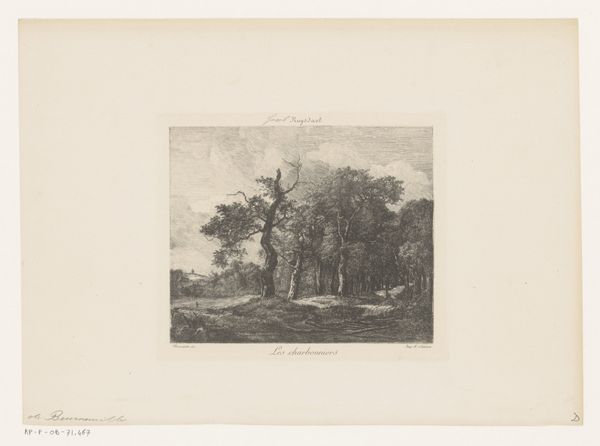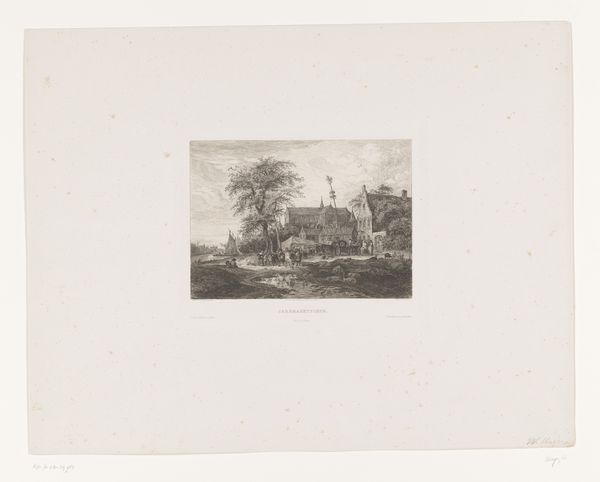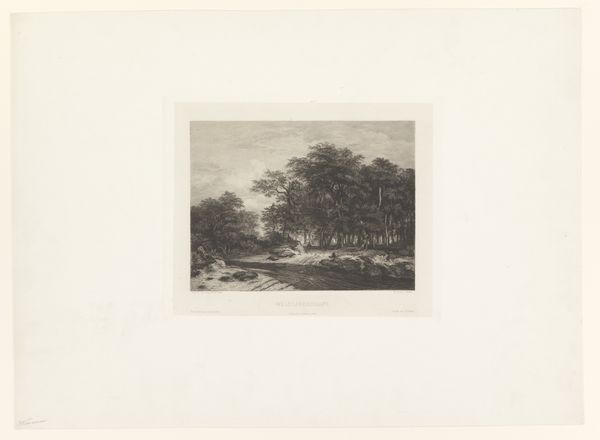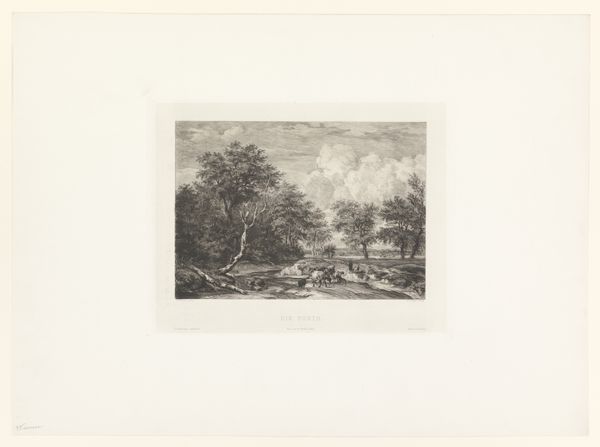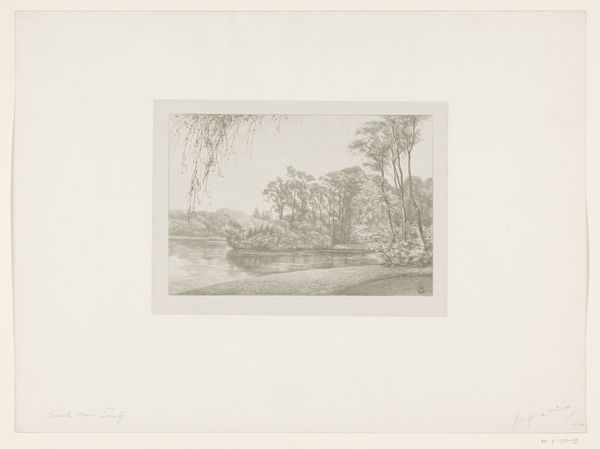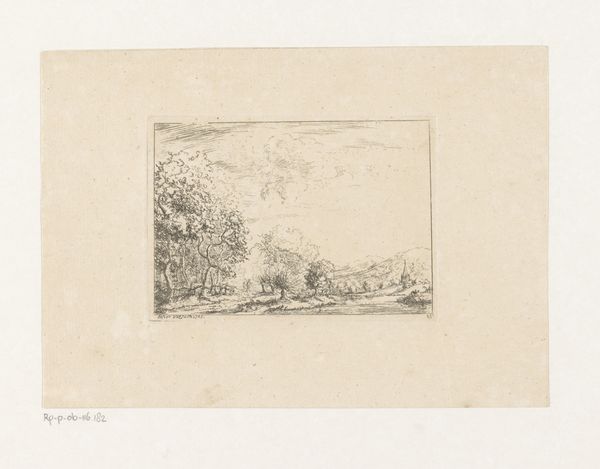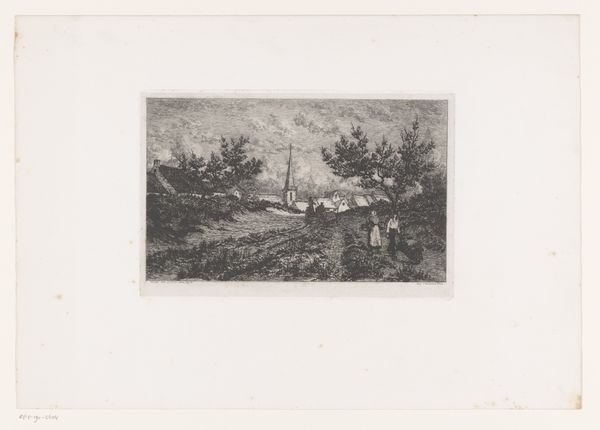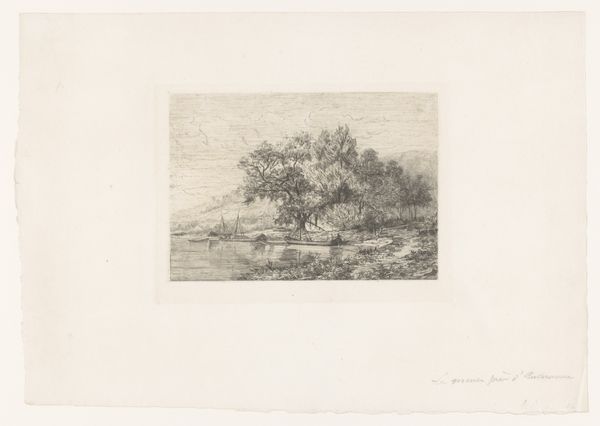
drawing, print, paper, graphite
#
drawing
# print
#
landscape
#
paper
#
road
#
graphite
Dimensions: height 157 mm, width 239 mm
Copyright: Rijks Museum: Open Domain
Curator: Emile de Baré's "Landweg langs een groep bomen," which translates to "Country Road by a Group of Trees," a graphite drawing done sometime between 1865 and 1902, sits before us. Editor: There's an overwhelming tranquility here. It reminds me of a childhood memory, wandering along dusty paths, lost in thought with nowhere to be. Did de Baré intend this sense of serene isolation, I wonder? Curator: It is evocative, isn't it? Considering its creation during a time of immense industrial change, such tranquil depictions perhaps reflected a yearning for simpler times, or a deliberate choice to elevate the natural world against urban encroachment. And the materiality, that rough paper suggesting an earlier provenance and perhaps, cheaper materials. Editor: I agree, it feels quite deliberate, the material selection and composition that is. Look how the road draws the eye, it implies a journey. The humble materials belie the intention, though, don't they? Is there a certain truth in its simplicity? How easy was graphite available back then? Curator: I find that truth resonates strongly here. Graphite was widely accessible, its very commonness enabled a democratization of art-making. Baré isn’t capturing a grand vista but an ordinary lane. Editor: A lane open to interpretation, indeed. Is the road well traveled? Is this landscape fruitful for agriculture? Where does it lead, and who would go there? Or maybe de Baré is playing on a bigger, historical canvas... A reflection on labor. It speaks of humble production in ways that royal portraits and rich oils simply could not. Curator: The act of rendering a seemingly mundane scene with care transforms it. There's an unpretentious beauty here. The contrast, like charcoal but lighter, and maybe that's all we need? Editor: Precisely. To acknowledge the everyday. It allows for a space free of unnecessary commentary where the individual can think, be pensive, or contemplative. In its unassuming way, that makes this drawing quietly radical, perhaps even, subtly revolutionary. Curator: In the end, the drawing becomes not just a representation, but an experience and reflection. Editor: That’s it— a moment of peace sketched simply but with enduring appeal and quiet subversion of artistic mores for a more reflective approach.
Comments
No comments
Be the first to comment and join the conversation on the ultimate creative platform.
